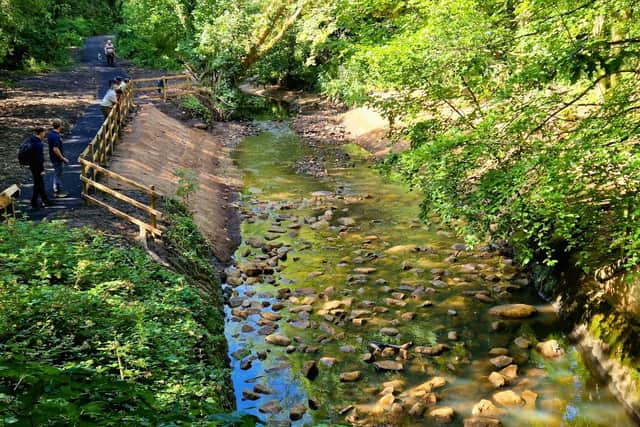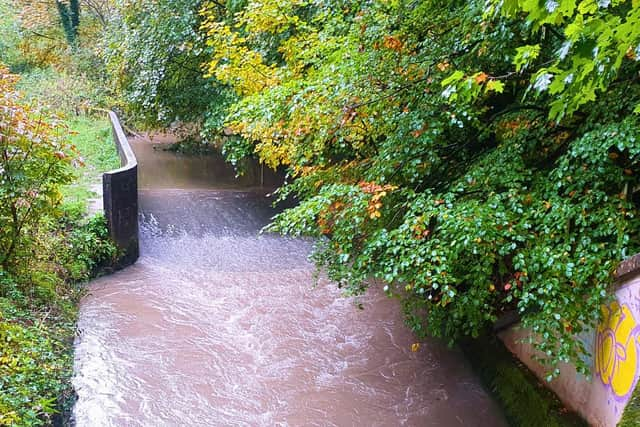Natural balance restored as three-year project is carried out on Wigan waterway
and live on Freeview channel 276
The Opening Up the River Douglas (OUR Douglas) project, delivered by charity Ribble Rivers Trust, has seen the modification or removal of eight river-blocking barriers and weirs.
Work started in 2020 to address eight weirs – Cobbs Clough, Downstream Pincroft, Gathurst, Grimeford Lane, Pottery Terrace, Red Rock, Upstream Pincroft and Worthington Weir.
Advertisement
Hide AdAdvertisement
Hide Ad

They were once a vital part of industry, but they are now obsolete and present challenges for migratory fish populations such as brown trout and Atlantic salmon.
Most fish species need to move up and down stream to spawn, survive and thrive. When this is prevented, it affects river ecosystems, impacting other species including otters and kingfishers.
Data was collected on each barrier, the river, wildlife and structures such as homes, roads and utilities. This was carefully analysed to prioritise which weirs posed the biggest problem and which removals would bring the most benefit to wildlife and residents.
Due to the urban nature of the area and the size of the structures, not all of the weirs could be removed and many of the projects were far from straightforward.
Advertisement
Hide AdAdvertisement
Hide Ad

Nonetheless, Ribble Rivers Trust implemented a range of solutions, including the construction of rock ramps and complete removals, to restore natural water flow and enhance aquatic habitats.
Head of river conservation Adam Walmsley said: “The completion of Gathurst fish pass and the removal of Cobbs Clough Weir bring to a close an exciting programme of fish passage projects in the Douglas catchment.
"Both projects were very challenging – Gathurst was a complex engineering problem with difficult access issues including an old canal swing-bridge, and Cobbs Clough had to be developed in half the usual time. But thanks to hard work by our team, and the help of our partners, particularly the West Lancs Countryside Ranger Service, we were able to pull it off. And we’re very happy with the results.”
Pre-construction surveys were conducted to gather data on river health and they will be replicated to determine the success of the work.
Early surveys have shown a dramatic increase in the number of fish successfully migrating upstream and an increase in the speed at which they move.